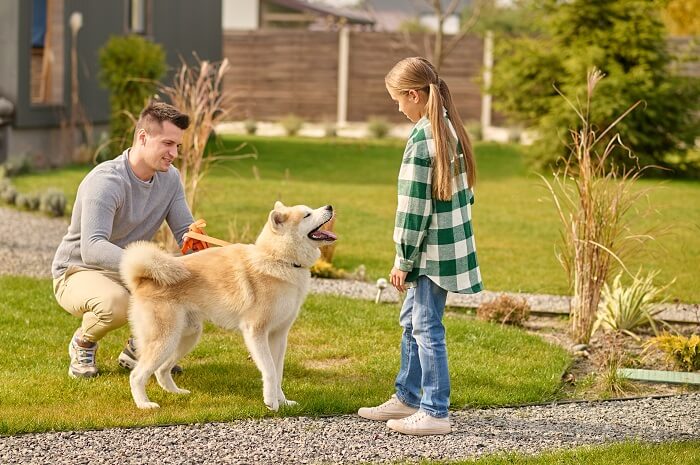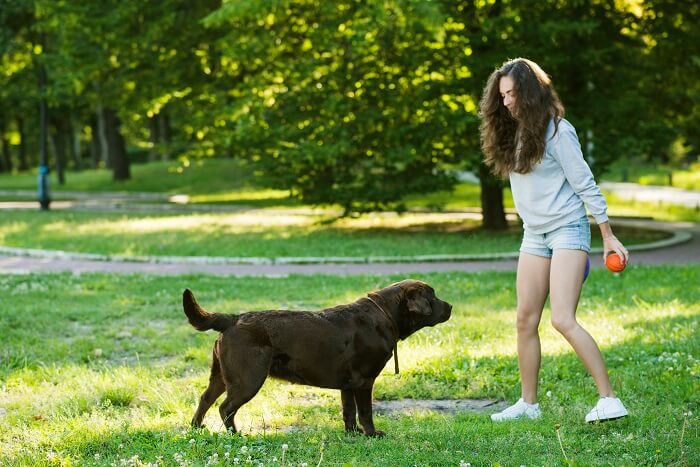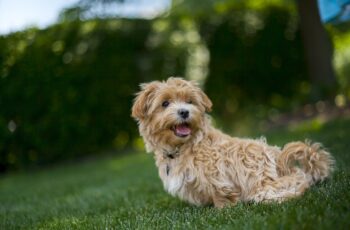Landscaping your outdoor space is an excellent way to enhance curb appeal and increase your property’s overall value. Some may think that it’s a pricey way to improve one’s home, but in reality, the cost of landscaping ranges from $50 for less complicated landscape designs to $7,000 for complex landscaping projects, according to price estimates on Forbes. But before you can start exploring landscape design ideas, there are several factors you need to consider. These considerations include the size of the yard, location, and scope of the landscaping project.
You also need to factor in the needs of your furry friend if you’re a pet parent. The last thing you want is to create an outdoor space that makes your dog feel uneasy when playing outside. With that said, it’s crucial to research which plants make pets sick. If you have bamboo plants, for instance, find out whether bamboo is poisonous to dogs. Doing so helps you choose pet-friendly landscaping plants for your outdoor space. Keep reading to learn more landscaping tips for pet parents.

Invest in Full Fencing
Keeping your dog safe can be difficult, but incorporating security features in your landscape is a good place to start. Assess your yard to determine if your furry friends can escape. Also, ask yourself if it’s possible for intruders to take your pets away from the garden. To ensure your furry friends stay safe while playing in the garden, fencing should be your priority. Installing high-quality fencing and lockable gates prevents your pets from escaping or being seen from outside. Your furry friend will also enjoy unlimited freedom in the garden.
When choosing a fence for your garden, make sure your dog can’t dig under it or jump over it. As a general rule of thumb, pick your fencing based on the size of your dog. This means, if your furry friend is tall, your fence should be taller. If your dog likes to dig, consider planting a hedge beside the fencing. Alternatively, create a dog-safe space or zone with plenty of room to run and play with toys, if you don’t want to enclose your entire garden.
Consider Adding a Water Feature
Simple water features in the garden, like waterfalls, rills, and ponds, makes your outdoor space a peaceful oasis that’s good for your mental health. Dogs love spending time near water sources too and drinking fresh water. Therefore, build a safe, flowing waterfall or pond that’s pet-friendly. To enhance your dog’s safety, create a gentle slope. This will ensure your dog can access the water safely to cool off or quench thirst. If you have a swimming pool in the garden, consider fencing around it to prevent your dog from jumping or falling in when you’re not near.
Grow the Right Plants
Before growing plants in your garden, do your due diligence. Keep in mind that many plants contain toxic chemicals that threaten the well-being of cats and dogs. Plants that may cause harm to pets are English Ivy, tulips, lilies, Japanese yews, daffodils, marijuana, azalea, and autumn crocus. Typically, these plants pose a risk to pets by poisoning them when ingested, or they can get hurt by the thorns on the stems.
The internet provides detailed information about different plants that affect different dog species. Also, consult with your vet to get professional advice on what plants to grow in your yard and which ones to avoid. Plants considered safe for outdoor spaces shared with pets are marigolds, camellia, hibiscus, herbs, spider plants, succulents, and crepe myrtle.
Choose Safe Landscaping Surfaces

Your furry friends don’t care what your yard looks like, but they will be cautious if the surface is too hot for them to lie or walk on during the hot season. For this reason, you’ll want to create areas with surfaces that maintain reasonable temperatures during extremely hot and cold seasons. As a pet parent, you want your furry friends to spend quality time outdoors in all weather. There are a variety of landscaping materials that create dog-friendly ground cover. This includes natural grass, bulk mulch, paving stones, and kennel tiles are perfect choices.
Building pathways using paving stones instead of gravel or small stones keeps your pet’s feet safe at all times when walking in the garden. Small stones and gravel have sharp edges that can cut your dog or get stuck in the pads of your pet’s paws. Using paving slabs prevents all these risks to your cats and dogs because they don’t have sharp edges that can cause cuts.
Create Pet-friendly Lawns
Apart from paving walkways, you can create a dog-friendly lawn by growing natural grass. However, maintaining natural grass when you have pets can be expensive and time-consuming. You’ll encounter issues like patchy or dead spots caused by pet urine. Cleaning pet droppings from grass can be difficult. To ensure your lawn is pet-friendly and easy to maintain, landscaping experts recommend installing the artificial turf.
There are many reasons for choosing artificial grass over natural grass. If you’re adamant about having a clean yard, you’ll absolutely love artificial turf since mud stains and tracks won’t stick to it. You also don’t have to worry about your dog getting into close contact with harsh chemicals because you don’t need to apply fertilizer on pet-friendly artificial turf.
Since there’s no need for watering, trimming, or mowing, you can save costs on lawn maintenance. With that said, it’s also wise to incorporate outdoor flooring for your backyard entrance, like installing terracotta tiles, stamped concrete, or paving slabs and stones. You can also create a foot bath where you can clean your dog’s feet and dry them with a fluffy towel. That way, you can easily trap some mud from your furry friend’s paws before they go inside your house.
Switch to Organic, Pet-friendly Fertilizers
Every homeowner wants to maintain a pest and weed-free lawn. To achieve the best results, many individuals use pesticides and herbicides in their yards. What they don’t know is that fertilizers and pesticides can be toxic to animals. When cats and dogs ingest synthetic fertilizers, they may experience abdominal pain, excessive vomiting and drooling, difficulty breathing, and inflammation of the pancreas and liver. Improper use of pesticides can also harm your furry friend’s health if ingested, inhaled, or get in contact with the skin.
Preventing your dog from spending time outdoors after applying fertilizer or spraying pesticides seems ideal to enhance its safety. But it would be much better to switch to organic fertilizers and non-toxic pesticides. Note that not all organic fertilizers are safe for your pets as they are made with animal products that may tempt your furry friend to eat them. Therefore, take time to read labels on organic fertilizers to ensure they are safe. This trick applies to fertilizers considered pet-friendly. Typically, pet-friendly fertilizers absorb in the soil and dry quickly, meaning you don’t have to worry about keeping your pet indoors for hours or days. Once organic or pet-friendly fertilizers dry, they are safe and won’t harm your pet’s health.
Build Shade for Pets
During the hot season, dogs want a comfortable place where they can relax and cool down. Naturally, dogs dig holes and lay inside to cool off from the heat. If you notice your furry friend digging holes in the yard, it’s a sign they are looking for a cool place to relax. To ensure your pet doesn’t destroy your lawn by digging, provide enough shade for them.
There are simple ways to create more shade in the garden. You could plant tall shade trees, install a pergola, or a dog kennel. Other backyard shading options for dogs include a patio umbrella, sun sail, an elevated cot with a canopy, and a roofed pen. Because modern pergolas feature removable sides and louvered roofs, you can control the amount of ventilation and temperature you and your pet enjoy while relaxing in the garden.
Dedicate Space for a Dig Pit
It’s natural for dogs to dig holes in the yard, but this simple action causes soil to dry. When your dog digs up the lawn, the grass dries and your precious plants end up destroyed. And while it’s possible to train your furry friend to stop digging, some dogs can’t suppress their urge to dig. That’s where a digging pit or sandbox comes in. Designing a sandbox or digging pit within the garden is an excellent way to protect your lawn from drying up when your furry friend digs holes.
With a sandbox in place, you don’t need to force your puppy to stop digging. They can enjoy digging holes without hurting your plants, soil, and lawn. To create a sandbox in the garden, dig a hole of any shape you want. Make sure the hole is big enough for your furry friend to lie down inside and play. After digging a hole, cover the bottom and sides of the pit with fast-drying concrete. Once the concrete is dry, fill the hole with playground sand. You can make the sandbox damp, especially during the hot season, to ensure your furry friend loves it more.
Landscaping for pets, especially dogs, means prioritizing their safety and usability. With this in mind, invest in fencing for safety reasons. Adding a water feature like a pond or waterfall with a gentle, shallow slope helps ensure your furry friend has access to fresh drinking water and a spot to cool off. Other important considerations when landscaping for dogs include choosing soft surfaces like artificial turf and paving concrete, building a sandbox, ensuring there’s enough shade, growing safe plants, and switching to organic fertilizers and non-toxic pesticides.


